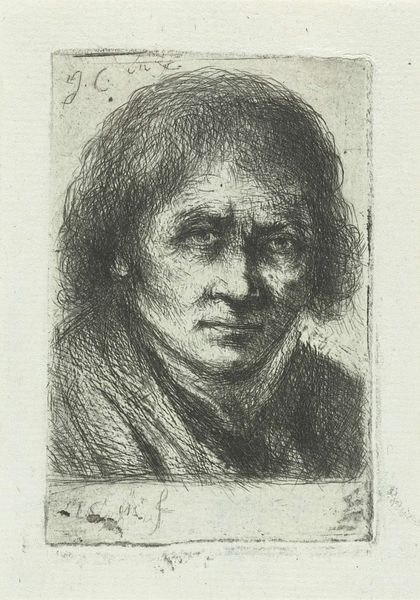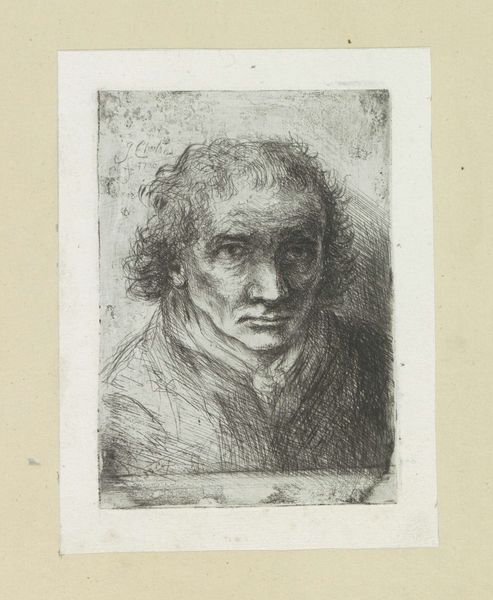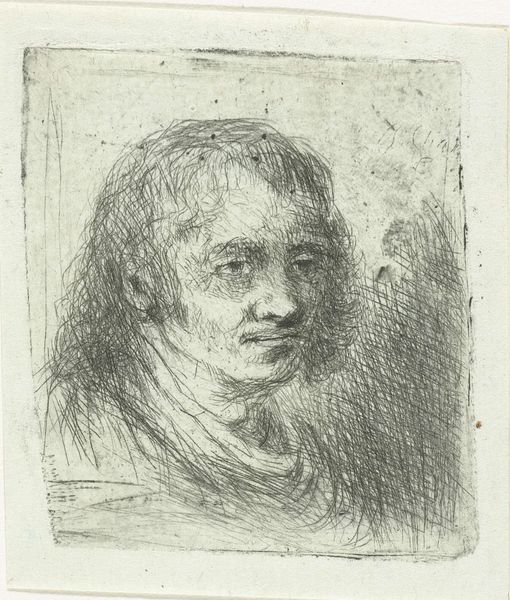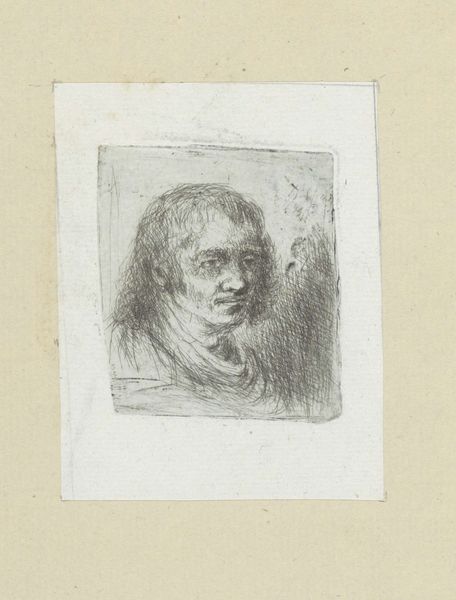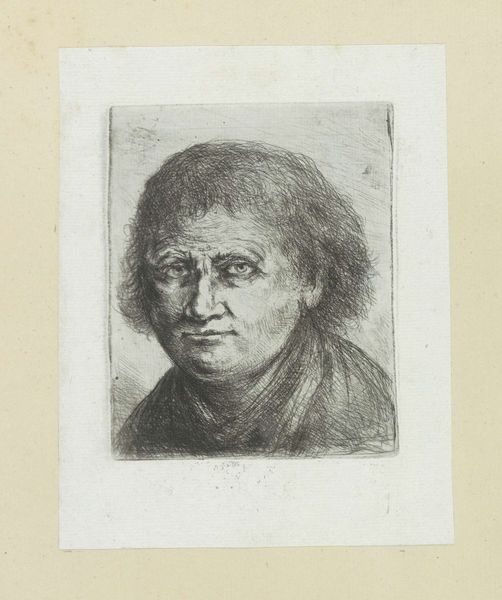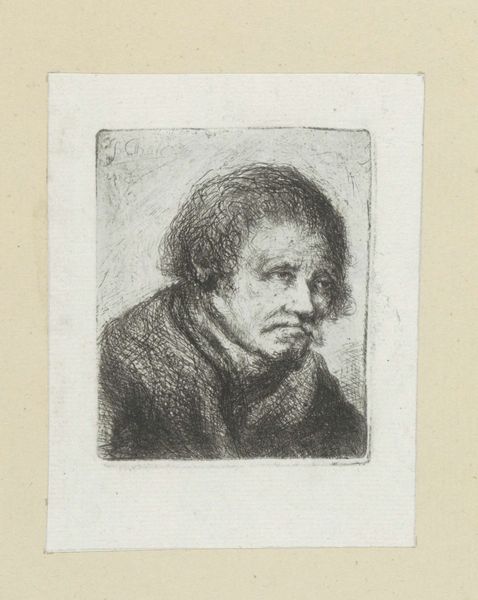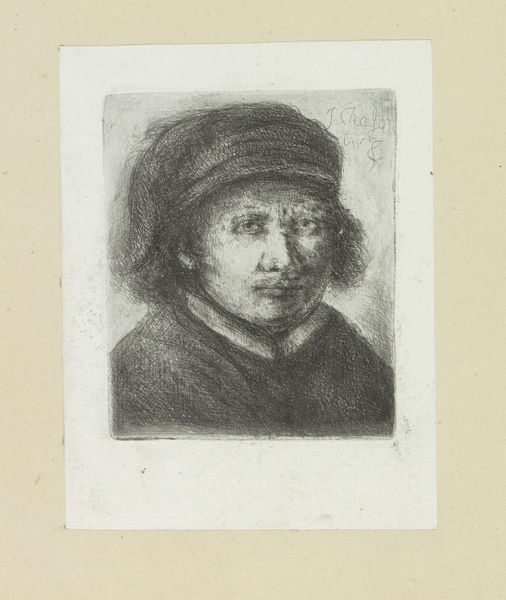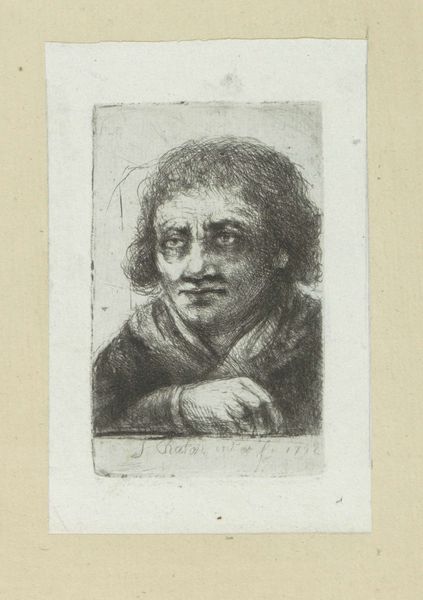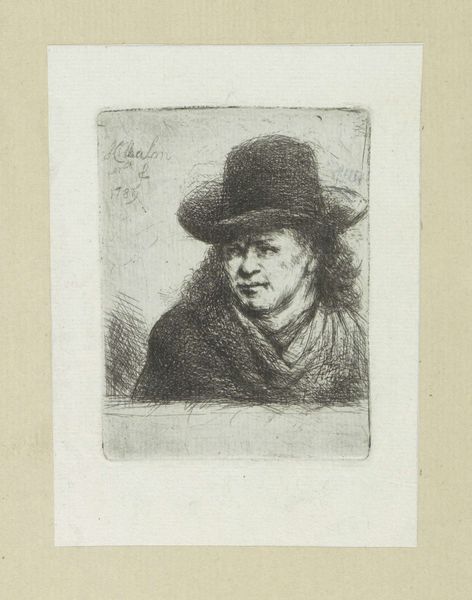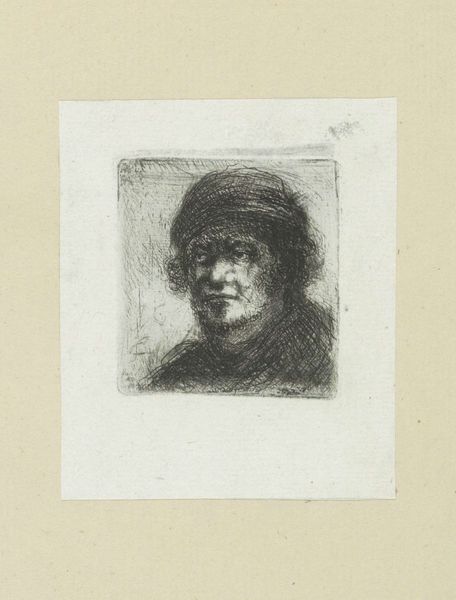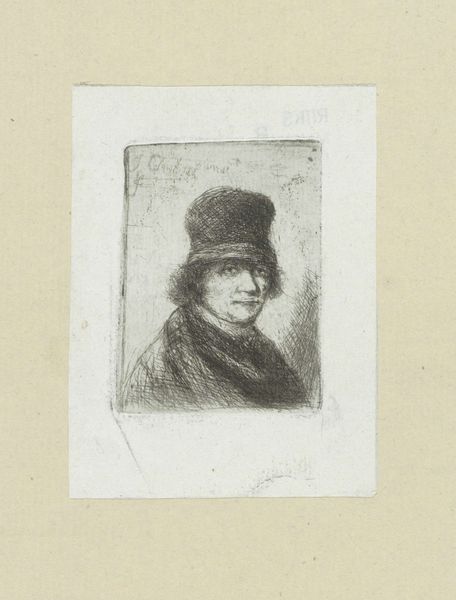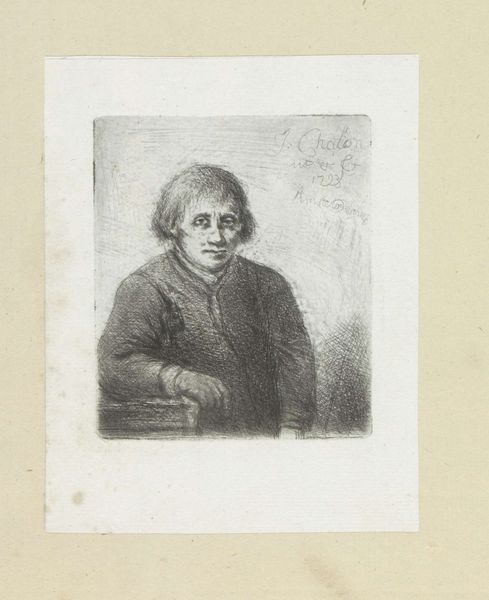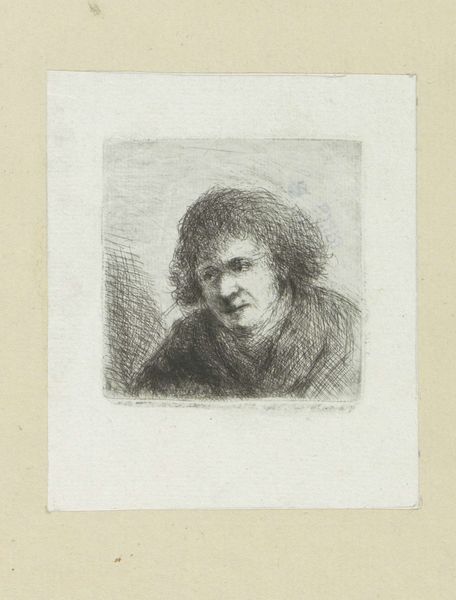
print, etching, engraving
#
portrait
#
neoclacissism
# print
#
etching
#
15_18th-century
#
engraving
#
realism
Dimensions: height 77 mm, width 50 mm
Copyright: Rijks Museum: Open Domain
Curator: Right, let's turn our attention to this compelling portrait. What strikes you most when you first look at it? Editor: Honesty, I think. Or maybe resignation. There’s a weight there, a depth in the eyes that feels...lived in, you know? And all those wiry lines creating the hair – almost chaotic against that rather solid expression. Curator: Precisely. The work, titled "Volwassen man" which translates to "Mature Man", was rendered by Jan Chalon around 1802. The artist worked with etching and engraving to realize the image as a print. The figure's unflinching gaze is typical of the Realist school and aligns with certain Neoclassical ideals too, with its emphasis on truth. Editor: It reminds me a little of Rembrandt's etchings actually—that raw quality of line, the play of light and shadow on the face. It definitely has that timeless feel, capturing something universally human. Is this realism or perhaps just a window into one man's soul? Curator: Indeed, the piece shares stylistic resonances with seventeenth-century Dutch portraiture. I would add, though, that these works gain new relevance in light of contemporary studies in masculinity. It begs questions of performativity; what expectations, imposed or intrinsic, manifest within his self-representation? And consider what is obscured! Editor: That's a potent way of putting it. Thinking about visibility, I do wonder about that almost-blank lower portion beneath the signature...It nearly serves as a pedestal to hold this individual – as if the work's incomplete without fully knowing or seeing all that forms a person’s existence. Curator: The incomplete nature could reflect anxieties around social hierarchies, even in supposedly enlightened times. The sitter is anonymous to us but may have held meaning at the time it was made for the artwork's audience. Editor: It makes you think about how much is unsaid, unseen, even in the most direct portrayals. Fascinating how a relatively simple image can unlock so much. Curator: Ultimately, a successful artwork transcends time by inspiring enduring questions across epochs and varied viewpoints, I think.
Comments
No comments
Be the first to comment and join the conversation on the ultimate creative platform.
